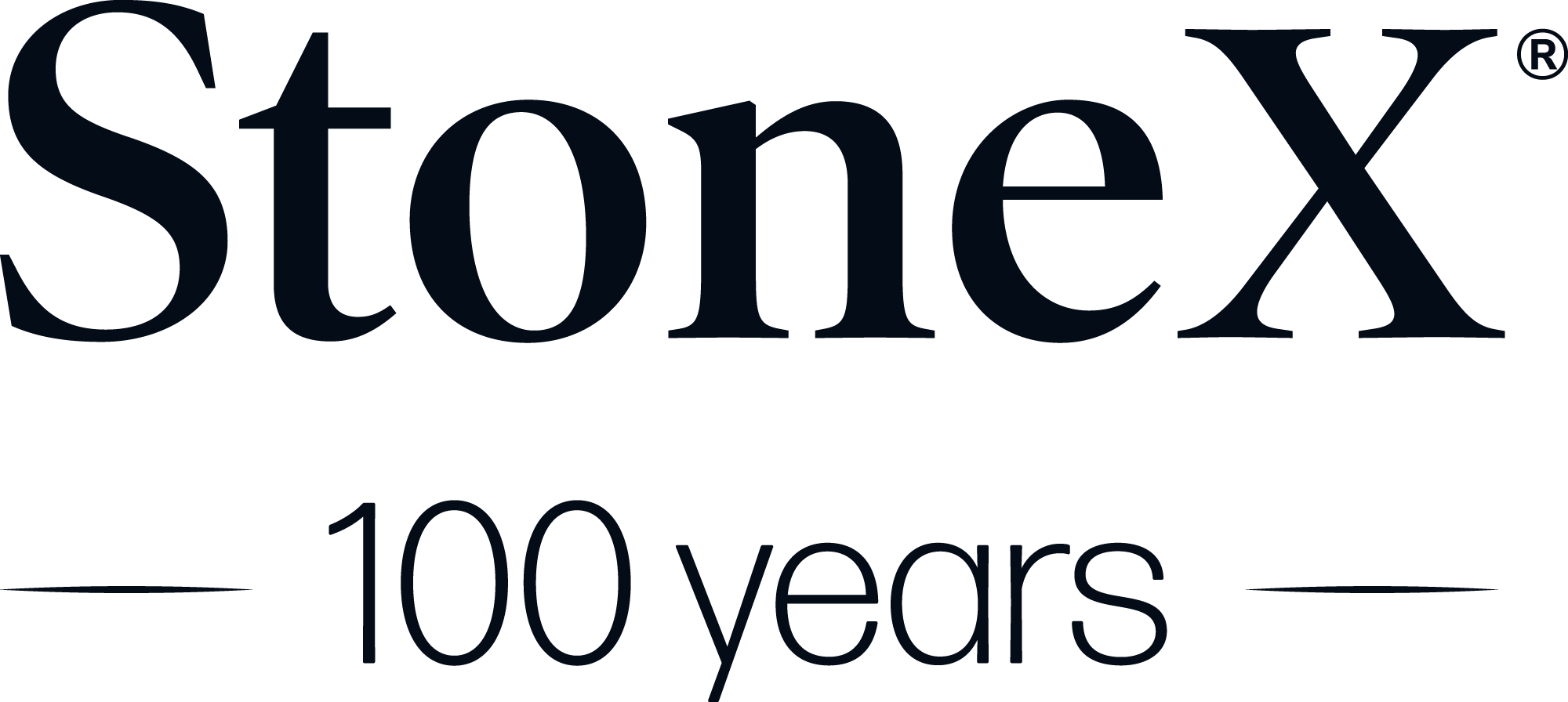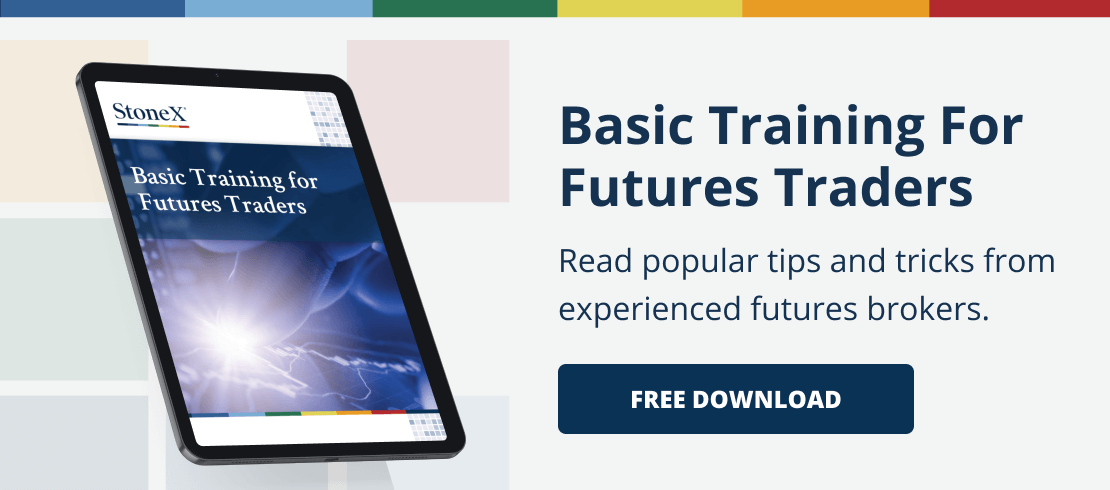Our Futures Order Entry Handbook provides a complete description of all types of futures orders, how they are executed and which are accepted by our member exchanges.
MARKET ORDER
The most common type of order is the Market Order. If you enter a Market Order, you state the number of contracts you want to buy or sell in a given contract month. You do not specify a price, since your objective is to have the order executed as soon as possible at the best possible price. Once a Market Order is placed it is filled and cannot be canceled.
LIMIT ORDER
A Limit Order specifies a price limit at which the order must be executed. In other words, it must be filled at that price or better. The advantage is that you know the worst price you will get if the order is executed. The disadvantage is that you cannot be certain that the order will be filled.
When buying, if the order price is lower than (below) the current market price, it is a Buy Limit.
As an example, with the market trading at 7800,
Buy 1 Dec DJIA 7700 on a Limit (or better…fill at 7700 or lower).
Order can only be filled at the stated price (7700) or lower (better).
When selling, if the order price is higher than (above) the current market price, it is a Sell Limit.
As an example, with the market trading at 7800,
Sell 1 Dec DJIA 7900 on a Limit (or better…fill at 7900 or higher).
Can only be filled at the stated price (7900) or higher (better).
STOP ORDER
Stop Orders are not executed until the market reaches a given price, at which time they become Market Orders.
When buying, if the order price is higher than (above) the current market price, it is a Buy Stop.
As an example, with the market trading at 7800,
Buy 1 Dec DJIA 7900 Stop.
Can only be filled at the Market, after the Market trades (or is “offered”) at 7900 or higher.
When selling, if the order price is lower than (below) the current market price, it is a Sell Stop
As an example, with the market trading at 7800,
Sell 1 Dec DJIA 7700 Stop.
Can only be filled at the Market, after the Market trades (or is “bid”) at 7700 or lower.
M.I.T. ORDER
Market If Touched. If the market trades at the trade price, the order will be filled at the next best price. Can only be used on Limit orders (not Stops).
G.T.C. ORDER
Good Till Canceled (or Open Order). Used in conjunction with a Limit or Stop order.Order will remain valid and worked until client cancels order, or it is filled, or the contract expires.
A GTC Order Does Not Cancel Automatically!
As an example, you are long 1 Dec DJIA and have a GTC order to sell 1 Dec DJIA @ 7700 Stop. You decide to sell your 1 long Dec DJIA on a Market order. Your GTC order must be canceled…or you will sell (short) 1 Dec DJIA if the market trades (or is “bid”) at 7700 or lower.
If an order is not designated Good Till Canceled, it is a Day Order and will expire at the end of the current trading session unless filled or canceled prior to the close.
O.C.O. ORDER
One (order) Cancels (the) Other.
As an example, with the market trading at 7800 you want to buy at 7600 Limit (lower), or on an upside breakout at 7900 Stop (higher),
Buy 1 Dec DJIA 7600 on a Limit, OCO
Buy 1 Dec DJIA 7900 Stop.
Whichever order is executed first causes the other to be automatically canceled.
O.S.O. ORDER
One (order) Sends (the) Other.
As an example, with the market trading at 7800, you want to buy at 7600 Limit (lower). Once filled, you want to send a Sell Stop Order through at 7500. The initial Buy order is considered the “main” order, with the Sell Stop being considered a &ldquoLeg.” O.S.O. orders can combine up to two &ldquoLegs”, including an O.C.O.
Buy 1 Dec DJIA 7600 on a Limit, OSO
Sell 1 Dec DJIA 7500 Stop
M.O.C. ORDER
Market On Close. Order will be filled at Market within the closing price range.
ENTER and CANCEL ORDER
All orders, Except Market Orders, can be canceled and replaced with a different order unless filled prior to cancellation.
As an example, you are long 1 Dec DJIA and have a GTC order to sell 1 Dec DJIA @ 7700 Stop. With the market trading at 7800, you decide to sell your 1 long Dec DJIA on a Market order,
Sell 1 Dec DJIA @ Market, Cancel selling 1 Dec DJIA 7700 Stop on GTC order No. 12345.
If you are not sure how to enter an order, Ask Your Broker! Not all exchanges accept all types of orders (see section Exchange Orders).
Exchange Orders
| EXCHANGE | LIMIT | MARKET | STOP | ||||||||
| MARKET | ORDER | ORDER | MOC | FOC | STOP | LIMIT | SWL | SCO | SCLO | MIT | OCO |
| CME | |||||||||||
| Markets | Yes | Yes | Yes | Yes | Yes | Yes | Yes | Yes | Yes | Yes | Yes |
| CBOT | |||||||||||
| Markets | Yes | Yes | Yes | Yes | Yes | No | No | No | No | No | No |
| Markets | Yes | Yes | Yes | Yes | Yes | Yes | Yes | Yes | No | No | MOC |
| NYMEX | |||||||||||
| Markets | Yes | Yes | Yes | Yes | Yes | Yes | Yes | Yes | No | Yes | Yes |
| NYMEX | |||||||||||
| Cotton | Yes | Yes | Yes | Yes | Yes | Yes* | Yes | Yes | No | Yes | Yes |
| O.J. | Yes | Yes | Yes | Yes | Yes | Yes | Yes | Yes | No | Yes* | Yes* |
| USD Index | Yes | Yes | Yes | Yes | Yes | Yes | Yes | Yes* | No | Yes | Yes* |
| CSCE | |||||||||||
| Coffee | Yes | Yes | Yes | Yes | Yes | Yes | Yes | Yes | No | Yes | Yes* |
| Sugar | Yes | Yes | Yes | Yes | Yes | Yes | Yes | Yes | No | Yes | Yes |
| Cocoa | Yes | Yes | Yes | Yes | Yes | Yes | Yes | Yes | No | Yes | Yes |
| NYFE | |||||||||||
| Markets | Yes | Yes | Yes | Yes | Yes | Yes | Yes | Yes | No | Yes | MOC |
| KCBT | |||||||||||
| Value Line | Yes | Yes | Yes | Yes | Yes | Yes | Yes* | Yes | Yes | Yes | Yes |
| Wheat | Yes | Yes | Yes | Yes | Yes | Yes | Yes* | Yes | Yes | Yes | Yes |
| MID-AM | |||||||||||
| Markets | Yes | Yes | Yes | Yes | Yes | No | No | Yes | No | No | Yes** |
Legend: SWL=Stop With Limit / SLCO=Stop Limit Close Only *=Not Held / SCO=Stop Close Only
FOC=Fill Or Kill / MIT=Market If Touched **No Meats / MOC=Market On Close / OCO=Order Cancels Order
Information Obtained From Sources Believed To Be Reliable But Provided Without Warranty

